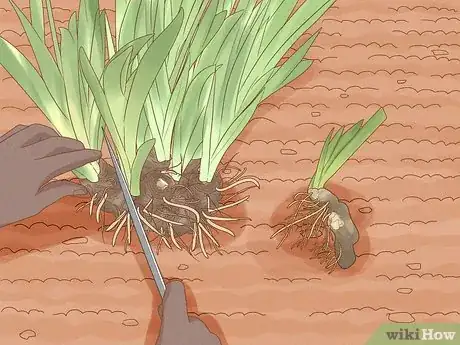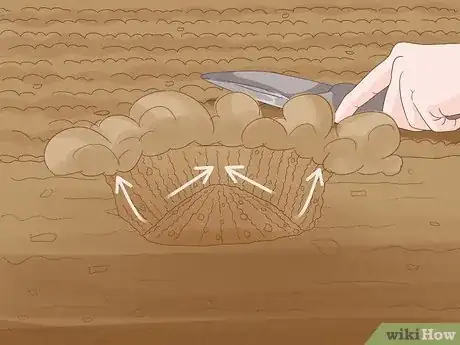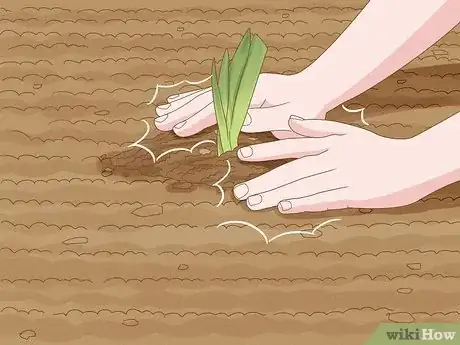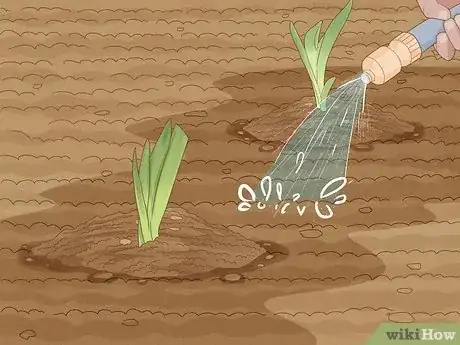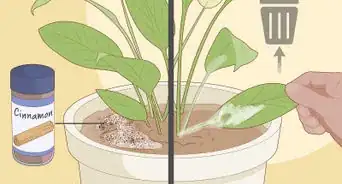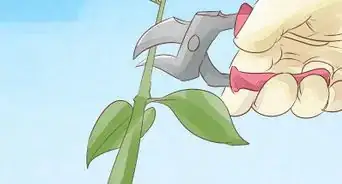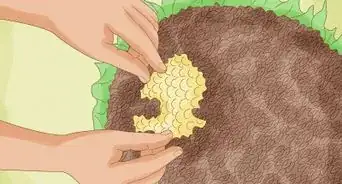wikiHow is a “wiki,” similar to Wikipedia, which means that many of our articles are co-written by multiple authors. To create this article, volunteer authors worked to edit and improve it over time.
wikiHow marks an article as reader-approved once it receives enough positive feedback. This article has 19 testimonials from our readers, earning it our reader-approved status.
This article has been viewed 225,338 times.
Learn more...
Bearded irises tend to become crowded every two to three years and cease to produce good blooms.[1] Division and transplanting allows the clump to rejuvenate and also provides a way to multiply your iris. It isn't difficult to do, but it is important to do it at the right time of year to ensure that the iris benefits most from the division.
Steps
-
1Choose the right time of year to divide. The best time for division of bearded irises is post flowering, at which point re-establishment of each plant will occur quickly. This can be around late spring and early summer, up to early August in the northern hemisphere.[2] Avoid dividing during dormant periods (wintertime) because the plant is trying to survive on the energy stored in its rhizome.[3]
-
2Know your iris. Given that division can differ slightly between irises, it is important to know which irises you are seeking to divide. This article applies to the bearded iris, the best known of the irises. If tried on other irises, be aware that there may be delays in flowering as a result. For example, beardless irises have rhizomes (roots) that grow on the same point each season and they do not take well to being moved.[4] If you do move beardless irises, they will probably not flower the season after the move.Advertisement
-
3Dig up the iris clump or part of the clump at a time. Use a spade or a fork. Note that the clumps can be heavy, so it's a good idea to have a helper on hand. Shake or hose off any excess soil from the roots.
-
4Break off and separate the larger fans. The rhizome should easily break off at a joint.
- Choose firm rhizomes that have both roots and a leaf fan. Discard (and do not compost) rhizomes that seem squishy or limp, as they may be rotten or diseased.
- This is a good time to remove spent foliage and larger, older leaves that may cause your plant to tip over before it establishes new roots. Do leave most of the foliage.
- You can break off the rhizomes by hand, or use a sharp knife to make the cut cleaner.
-
5Dig an area where the irises are to be replanted. Form a mound in the center and sit the rhizome on top of this. Spread the roots out in the hole.
-
6Pour the soil in around the root and pack. The soil should go up to the top of the rhizome. It is fine if the rhizome is partially exposed.
- Bearded irises appreciate a limed soil, so provide this if necessary.[5]
-
7Space rhizomes 4-6 inches (10-15 cm) apart and make sure the fans point in the same direction. Some sources suggest spacing of one foot (30cm) or even two feet (60cm), especially for tall bearded iris. When you choose your spacing, decide how dense you'd like your bed to be, and how soon you would like to divide your irises again[6] .
-
8Water deeply after planting. Water well every week until fall to establish the patch. Infrequent, deep water is better than more frequent, shallow water. Irises are reasonably drought resistant, but too much water can encourage rot.
Community Q&A
-
QuestionI live in Edmonton, AB. My Irises did not flower this year, and I have a patch where nothing grew. Can they still be divided, or are they too old? Would I divide them in the spring?
 Community AnswerDivide your Irises after they bloom. Most often, there is something from which you get divide. If they didn't bloom, they might not be getting enough sunlight. They grow best in full sun; little sun will most likely only give you leaves. Dividing is easy and helpful to them, especially if you notice the middle is empty - that is a sure sign they are reading for dividing.
Community AnswerDivide your Irises after they bloom. Most often, there is something from which you get divide. If they didn't bloom, they might not be getting enough sunlight. They grow best in full sun; little sun will most likely only give you leaves. Dividing is easy and helpful to them, especially if you notice the middle is empty - that is a sure sign they are reading for dividing. -
QuestionSo when is the best time to divide irises?
 Community AnswerYou should divide them just after they have finished flowering. Be sure to discard old and/or unhealthy rhizomes.
Community AnswerYou should divide them just after they have finished flowering. Be sure to discard old and/or unhealthy rhizomes. -
QuestionCan I dig up and store Rhizome over the summer months?
 Community AnswerIt depends on where you live and where you store them. In some places such as Michigan, you can digup iris rhizomes and set in the yard for a couple months with no ill effect.
Community AnswerIt depends on where you live and where you store them. In some places such as Michigan, you can digup iris rhizomes and set in the yard for a couple months with no ill effect.
Warnings
- Iris borers wreak havoc on irises. During division, they are in the grub stage. If you see a whitish pink grub, dispose of it by squashing it.⧼thumbs_response⧽
Things You'll Need
- Spade
- Iris patch in need of division
- Knife (optional) to cut the rhizomes cleanly
References
- ↑ Pamela McGeorge and Alison Nicoll, Irises, p. 23, (2001), ISBN 1-86953-470-0
- ↑ Better Homes and Gardens, A grower's guide to bulbs, p. 71, (1997), ISBN 0-86411-544-X
- ↑ Pamela McGeorge and Alison Nicoll, Irises, p. 23, (2001), ISBN 1-86953-470-0
- ↑ Pamela McGeorge and Alison Nicoll, Irises, p. 41, (2001), ISBN 1-86953-470-0
- ↑ Better Homes and Gardens, A grower's guide to bulbs, p. 71, (1997), ISBN 0-86411-544-X
- ↑ http://faq.gardenweb.com/faq/lists/iris/2002045002020707.html



